A maritime-themed weekend in Hamburg
I’ve visited Amsterdam – about two and a half hours from home – more times than I can count. Hamburg is only slightly further away – three hours by car – and I’d never been there. It was time.
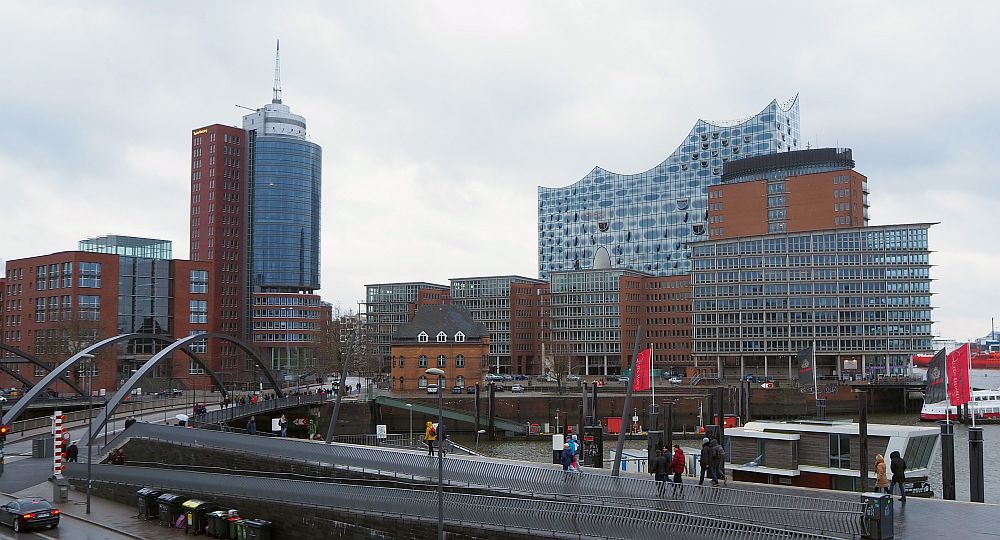
My husband, Albert, and I decided to spend a weekend in Hamburg and I was fortunate enough to connect with the #cometohamburg campaign to help me plan it.
Disclosure: I was sponsored by the companies described in this article, which means I got free
admission. Nevertheless, all opinions are my own.
Another disclosure: This article contains affiliate links. If you book something through one of these links, I will get a small percentage of what you spend. Your price will not be affected.
Hamburg’s maritime history
As I researched things to do in Hamburg, it became clear that all the sights that most interested me were the ones related to Hamburg’s maritime history.
Like the city where I live, Groningen, Hamburg became an important member of the Hanseatic League, an alliance of trading cities, in the Middle Ages. Its harbor was a major port. The city grew steadily for centuries, and remained an independent city-state until the 19th century (except for a few years when Napoleon I controlled it).
A major turning point in Hamburg’s history was the “Great Fire” of 1842, when about a quarter of the city’s buildings were destroyed. The city rebuilt, of course, and the harbor was busier than ever through the 19th and into the 20th century.

About 100 years later, in 1943, fire bombing raids by the Allies – called Operation Gomorrah – wiped out entire neighborhoods. After the war, the city rebuilt again, this time with many of its residential neighborhoods replaced by warehouses and offices, while the population that had survived the raids moved to areas outside of the city center.
Because of the Great Fire and the Allied bombings, not much of the historical Hamburg remains. Nevertheless, the rebuilt, reimagined city is a fascinating mix of modern architecture and more traditional styles from the pre- and post-war periods.
If you’re planning a visit in November or December, make sure to read my article about the Hamburg Christmas markets, written after a return visit to Hamburg!
A maritime-themed Hamburg weekend
Because of Hamburg’s strong connection to shipping, I focused primarily on sights related to Hamburg’s history or present-day status as a port city.
Barkassen-Meyer boat tour
Taking a boat tour of Hamburg’s harbor seemed an appropriate part our visit. Unfortunately, the weather wasn’t great: quite grey with on and off rain.
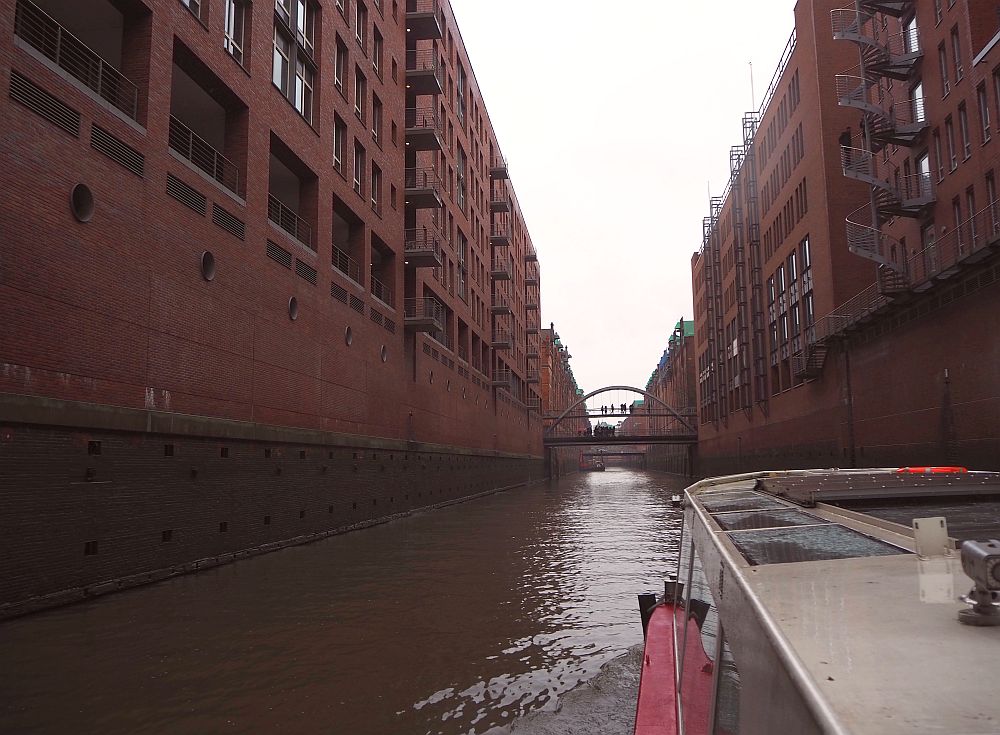
We started out by cruising along a canal through the Speicherstadt, UNESCO-listed as the largest warehouse district in the world. The warehouses mostly date to 1883-1927, though the area sustained heavy damage in the war so a lot of them were extensively rebuilt. Read more about Speicherstadt at WorldWideWriter.
Taking about an hour, the tour continued out into the larger harbor, past a number of unusual modern buildings, including the impressive and impressively over-budget Elbphilharmonic. And, of course, we passed lots of boats of all sizes, as well as drydocks where ships were being repaired. The harbor is overshadowed these days by bigger international ports like Rotterdam and Hong Kong, but is still a major port for German trade.

The people who sat inside our little boat had good views through big windows, and drinks were available throughout the ride. I spent most of the tour outside in the open space in the stern of the boat trying to get good pictures, despite the rain.
The narration on the tour we took was in German, but one English tour is offered every day at 13:00 from April to October. If you are going to take a tour with German narration, download the company’s app ahead of time and bring headphones, so you can listen to the information through that.
Barkassen-Meyer boat tour: Leaves from St. Pauli Landunsgbrücken pier 2 or 6. Boats leave daily, about every hour, in the high season (April-October) from 10:00-16:00; November-March 11:00-15:00. Book your tour here.
A free walking tour of Hamburg
We took a free walking tour focused on the history of Hamburg, offered by Robin and the Tourguides. Our guide, Phillip, an Australian transplant, shared Hamburg’s history in a clear and comprehensible way, sprinkling his narration with amusing personal stories and observations on the people of Hamburg and their fiercely independent way of seeing their place in the world.
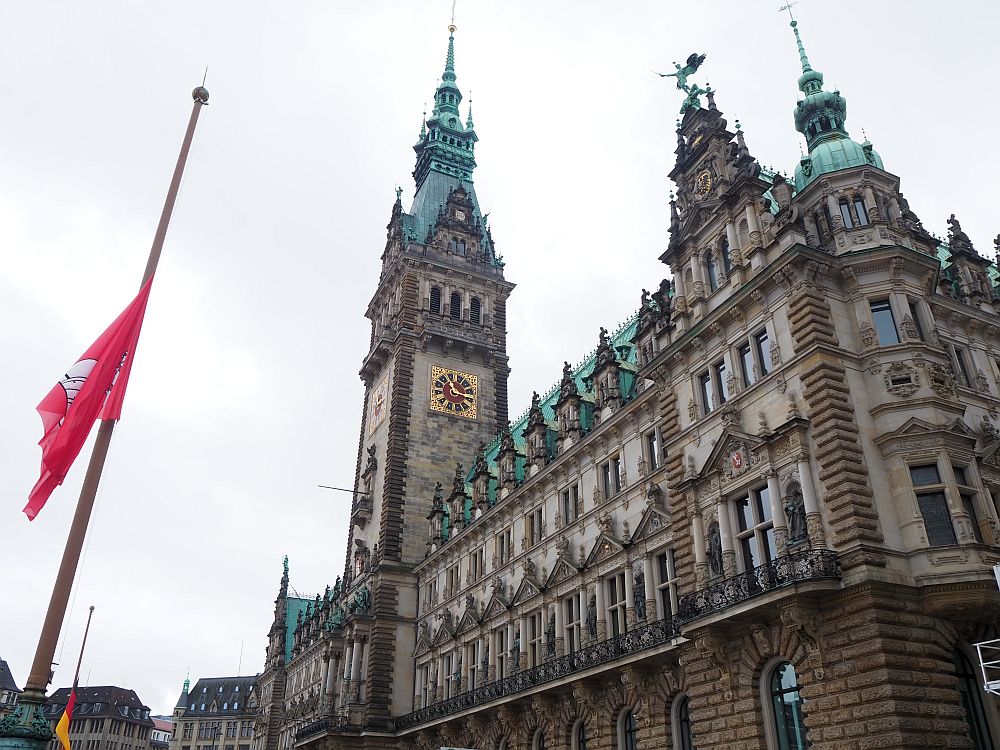
The tour started at the Rathaus (city hall), the ornate centerpiece rebuilt after the 1842 fire in neo-Renaissance style. Other stops included the Deichstraße, a row of 17th and 18th century buildings that survived the fire; St. Nikolai Church, destroyed twice and now serving as a memorial; and the baroque-style St. Michael’s Church.
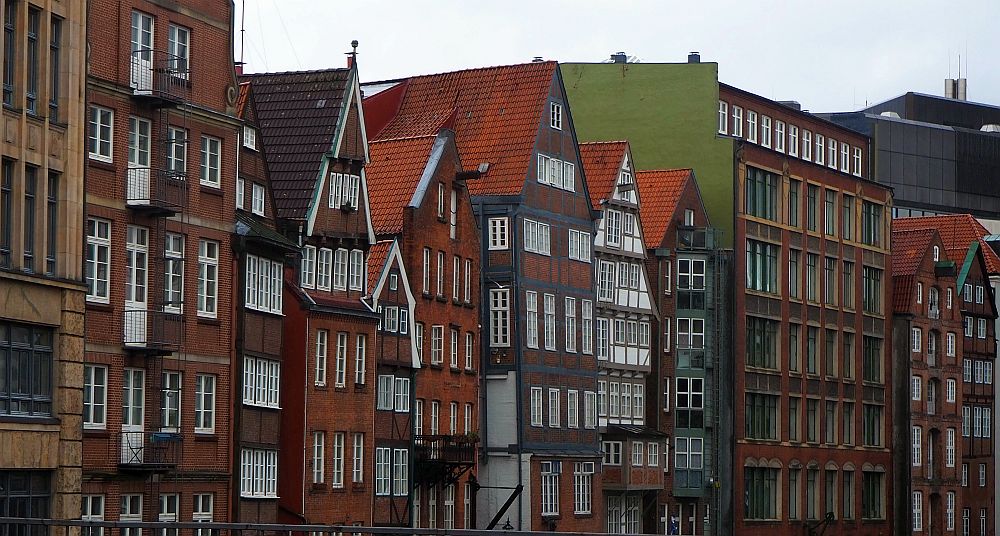
Robin and the Tourguides offers daily tours, which are, as advertised, free, but the assumption is that you will tip the guide based on how much you enjoyed the tour. The meeting point is in front of the Rathaus. Book the tour here.
International Maritime Museum
First of all, I have to point out that the Maritime Museum is huge, housed in the oldest of the former warehouses in Speicherstadt. I really only got to see two of the nine “decks” well. This place could easily take all day to see properly, and I’d only budgeted two hours.
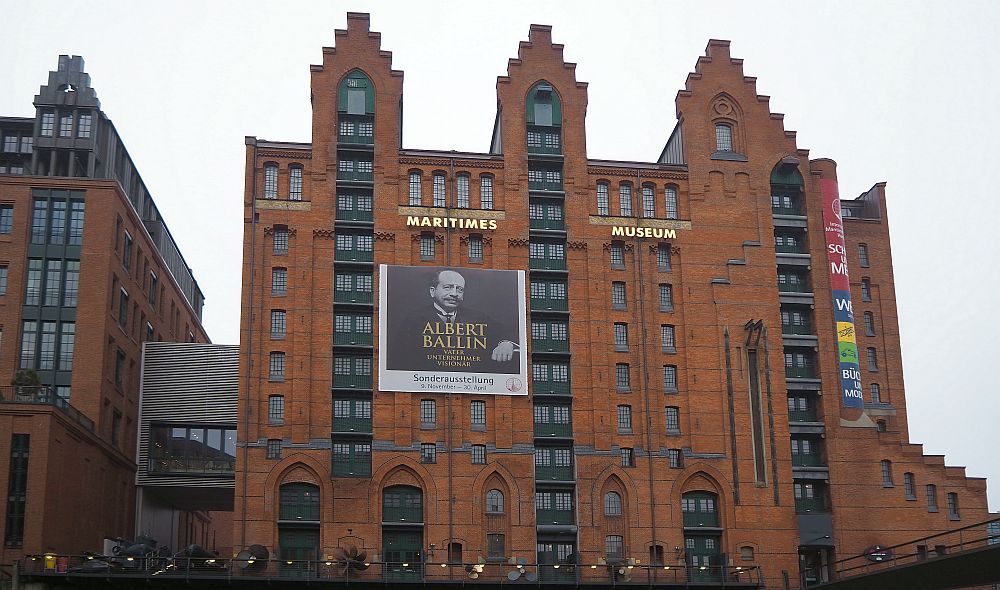
Deck 9 houses a massive collection of miniature boats, all on a 1:1250 scale. When I say “massive,” I’m talking tens of thousands of boats of all shapes and sizes and time periods. The collection includes amazingly detailed tiny ships, complete with rigging.

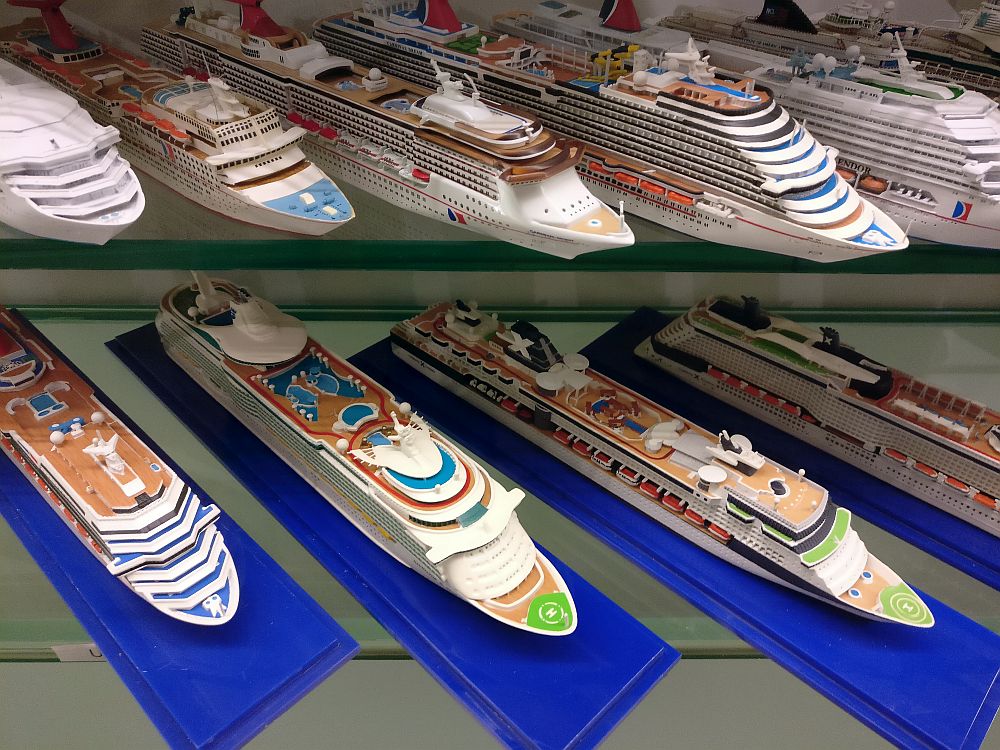
On Deck 8, the collection continues, with maritime artwork and the “treasure chamber.” This refers to a section of the exhibit displaying ships made of bone built by prisoners in French prisons, boats carved from amber, and some carved from ivory. It also shows silver boats and one solid gold copy of Columbus’s ship, the Santa Maria.
Other floors contain everything you could ever want to know about ships. One floor is focused on how historical ships were built. Another looks at marine research, while one has a mockup of a pirate ship complete with antique cannons. You can learn about navies of the world, navigation, uniforms, weapons, sea exploration, and the work of oceanographers.
The International Maritime Museum: Koreastraße 1 (U-bahn line U4, station Überseequartier). Open daily 10-18:00. Fee: €18. Book tickets to the International Maritime Museum.
Ballinstadt Emigration Museum
The Ballinstadt Emigration Museum is not officially part of the #cometohamburg campaign, but, curious about the history of emigration, I decided to visit anyway and they agreed to sponsor me.
Albert Ballin was head of the Hamburg-America shipping line at the turn of the century. In that period, thousands of people made their way to Hamburg to board ships to America, including, I suspect, some of my ancestors.
The problem was that, while they waited for their ships to leave, they had nowhere to stay; these were generally poor economic emigrants and most couldn’t afford a hotel. Ballin hit on the idea of setting up a hostel of sorts, where the travelers could stay cheaply and would pay one price for room and board. They also had daily medical exams; if they arrived in America with a disease and were rejected, the company would have to pay their return journey.
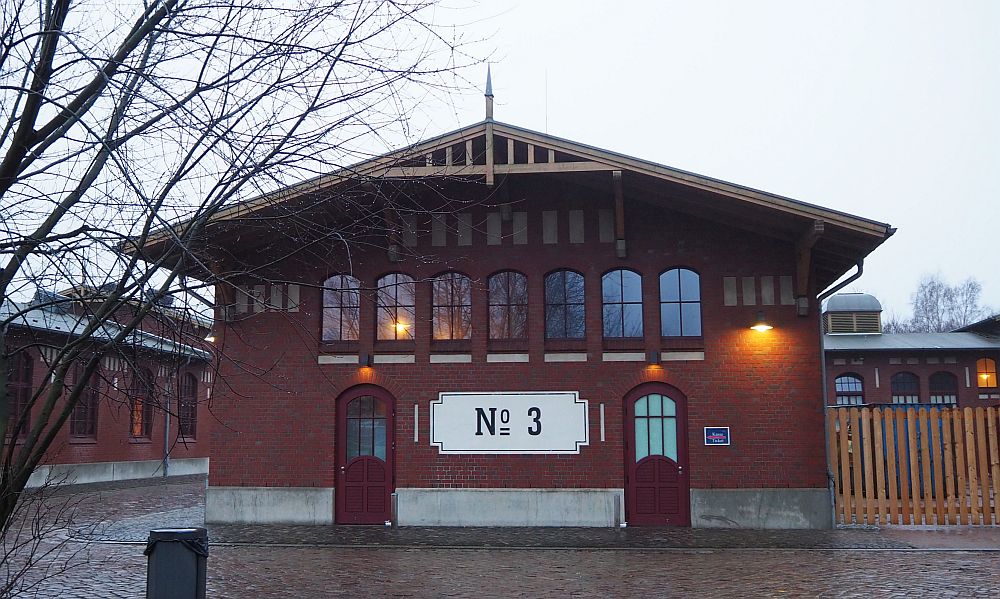
Today’s museum is housed in the buildings once used as hostels. The displays are creative and lively, but unfortunately very little of it is in English. A booklet, though, translates many of the texts, and most of the displays are self-explanatory. Sections address different parts of the journey: why they left their homes, what they left behind, what life was like in this hostel, and so on. I was particularly pleased to see some parallels, drawn visually, between these historical emigrants and present-day emigration issues, like the recent Syrian refugee crisis.
Ballinstadt Emigration Museum: Veddeler Bogen 2. The museum is on the other side of the river from the other sights, but it’s just a short subway ride to get there. Take the S-bahn number 3 or 31 and get off at Hamburg-Veddel. The museum is just across the parking lot. Open daily March-October 10:00-18:00 and November-February 10:00-16:30. Fee: €13.90. You can get your tickets to the Ballinstadt Emigration Museum here.
Chocoversum
According to the CBI (the Center for Promotion of Imports from Developing Cuntries), “Germany is the second-largest grinder and importer of cocoa in Europe, behind the Netherlands.” Most of the chocolate-grinding companies are in Hamburg.
This fact is why I can claim the Chocoversum as relevant to the maritime theme of our weekend in Hamburg. The real reason I went there is, of course, because I’m a chocoholic.
The Chocoversum is more of an “attraction” than a museum. It’s basically a tour illustrating how chocolate is produced. A very cheerful and knowledgeable guide took us, in about 90 minutes, through every step of the process, from cacao beans being harvested to the elegant finished product, with tastes at every stop.
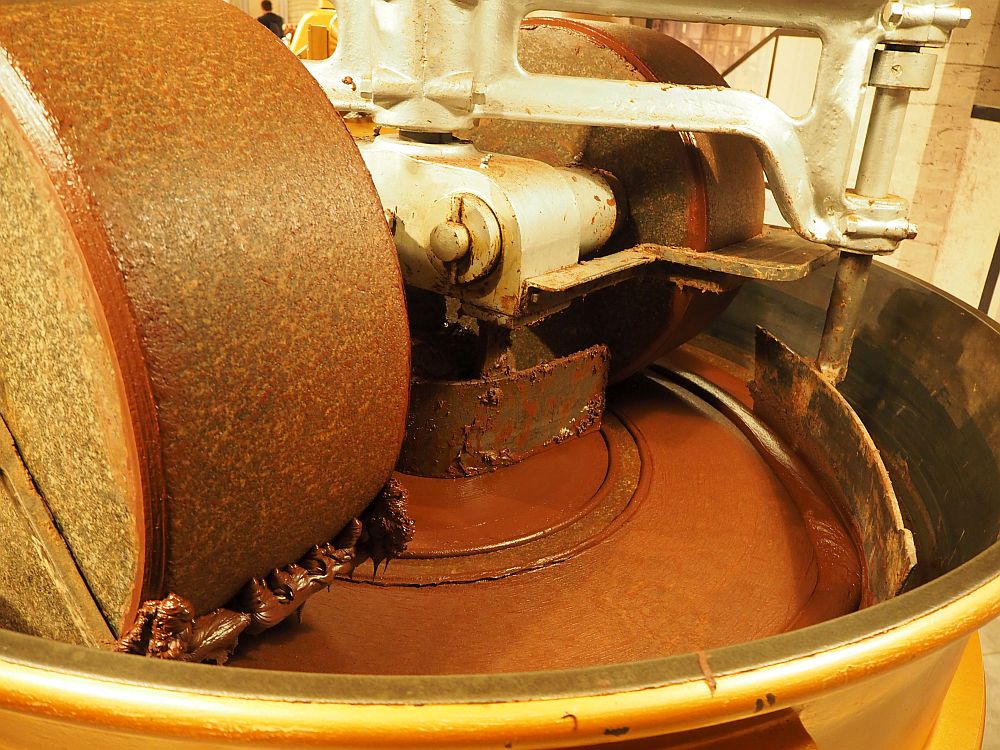
Chocoversum: Pumpen Street, opposite the Chile House. You can walk there from the central train station in about 10 minutes. Tours are available in English and are offered daily, but you have to book them ahead. Fee: €19-€25, depending on the day and whether you book ahead or at the door. Book your Chocoversum tour here.
You might also enjoy my Berlin articles, like these:
Other things to do on a weekend in Hamburg
My husband and I have difference interests, so for some activities we went our separate ways. While I visited the Maritime Museum, the Emigration Museum and Chocoversum, sticking to my maritime Hamburg theme, my husband spent some of his Hamburg weekend on some non-harbor-related sights.
Kunstmeile
Hamburg has a remarkable array of art museums and galleries. Five of the best have combined forces to make up the Kunstmeile. If you’re into art, from ancient to cutting-edge modern, this could keep you busy all weekend.
- Art Association in Hamburg exhibits mainly contemporary international artworks. Kosterwall 23. Open Tuesday-Friday 12-18:00; Saturday-Sunday 11:00-18:00. Fee: €5. Website.
- Bucerius Art Forum puts on three or four exhibitions per year, one at a time. Rathausmarkt 2. Open daily 11-19:00 and until 21:00 on Thursdays. Fee: €9. Website.
- Deichtorhallen Hamburg has three buildings, all enormous exhibition halls: the Hall for Contemporary Art, the Phoxxi House of Photography and the Falckenberg Collection (contemporary art, only viewable as part of a guided tour, and only on the first Sunday of the month). Deichtorstraße 1-2 and Wilstorferstraße 71. Open Tuesday-Sunday 11:00-18:00; and until 21:00 on the first Thursday of the month. Combined fee for the Hall of Contemporary Art and the Phoxxi: €16. To add the Collection Falckenberg, add another €11. Website.
- Hamburger Art Hall covers centuries of art and is particularly focused on German medieval paintings, the Dutch Golden Age, German art from the 19th century and classical modernism. Glockengießerwall 5. Open Tuesday-Sunday 10:00-18:00, Thursdays until 21:00. Fee: €16, but special exhibits may cost extra. Website.
- Museum of Arts and Crafts Hamburg includes, like the Hamburg Art Hall, centuries of art from around the world. Steintorplatz. Open Tuesday-Sunday 10-18:00 and Thursdays until 21:00. Fee: €14, free on the first Thursday of the month after 17:00. Website.
My husband managed only two of these, and even those two he didn’t see thoroughly. At the Museum of Arts and Crafts he enjoyed a special exhibition called “Otto,” showing paintings by the German comedian Otto Waalkes (The exhibition has ended.). Albert told me that he loved the way that the artist depicted an elephant in every painting. He was also impressed by how the pieces were displayed so thoughtfully, so that the color of the wall complemented the painting.

Upstairs, Albert visited the Pop and Protest exhibit (This exhibit has also ended.), where he was impressed by the collection of artwork of protest from the 60s and 70s.
As for the permanent collection, Albert is a fan of art nouveau, so he wandered the exhibit of furniture and everyday objects from the period.
At the Deichtorhallen, Albert visited the photography hall, where the special exhibition was “Life in Cities,” showing photography by Michael Wolf (now closed).
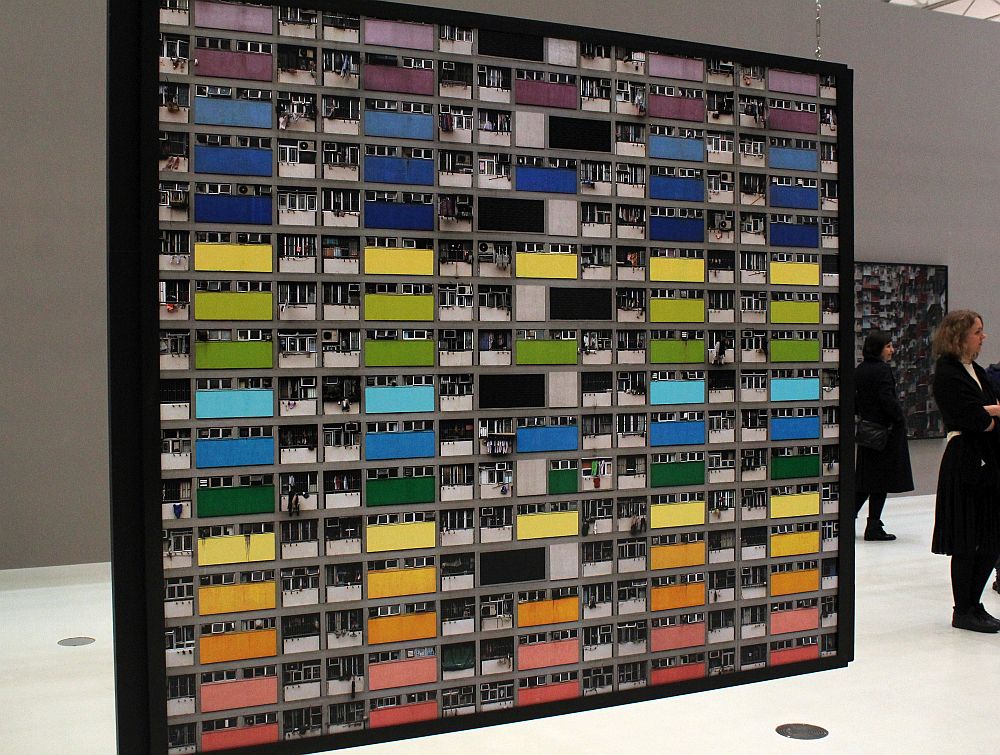
Kunstmeile: If you’re going to visit just one or two of these museums, you could pay separate admission fees, but if you want to visit more, you’d be better off getting the 3-day Kunstmeile pass, giving access to all five museums for €35.
Dialogue in Silence
The Dialogue in Silence is an immersive experience showing participants what it is like to be deaf. According to Albert, the experience is illuminating, but also great fun. A deaf guide leads a small group through a series of activities in the space of an hour: playing a game, trying out sign language in the form of a guessing game, and so on. Participants move through a series of silent rooms as they do the activities, wearing noise-cancelling headphones. The way Albert described it to me, I was sorry I missed it. Maybe next time.
Dialogue in Silence: Alter Wandrahm 4. Open daily from 10:00. You are required to book in advance. Fee: €18.50. Dialogue in Silence’s website.
Getting there and getting around
Hamburg is in the north of Germany. Trains are mostly efficient and quick from anywhere in the country. From Berlin you can get to Hamburg in a bit over two hours without changing trains. From Cologne there is also a direct train, which will take four hours. It’ll take a bit less than three on the direct train from Frankfurt. From Copenhagen the direct train will take under five hours. And from Amsterdam, the quickest train route involves changing trains at Osnabruck, and will get you there in a bit longer than five hours.
Once you’re in Hamburg, you can get around easily on public transportation, either by rail (The U-Bahn is underground while the S-Bahn is above ground) or by bus. Even on Sunday, we never had to wait long for buses or trains, though I admit we didn’t try to use them late at night.
We found that the city isn’t very compact and the weather was bad when we were there, so we made full use of our Hamburg Cards. These cover from one to five days of unlimited bus, train and harbor ferry transportation as well as offering lots of discounts on tours, restaurants and attractions. Hamburg Cards start at €11.50 for one day.
Where to stay on your Hamburg weekend
We stayed at Mercure Hotel Hamburg City, and you can read my review of it here. I’d certainly recommend it. You can book Mercure Hotel Hamburg City here, or browse other Hamburg hotels here.
Have you ever been to Hamburg? Is there a particular sight or activity that you’d recommend adding to this list? Please add a comment below!
Also, I’d appreciate it if you’d share this article on social media! The images below are formatted for Pinterest.
Updated October 2024.
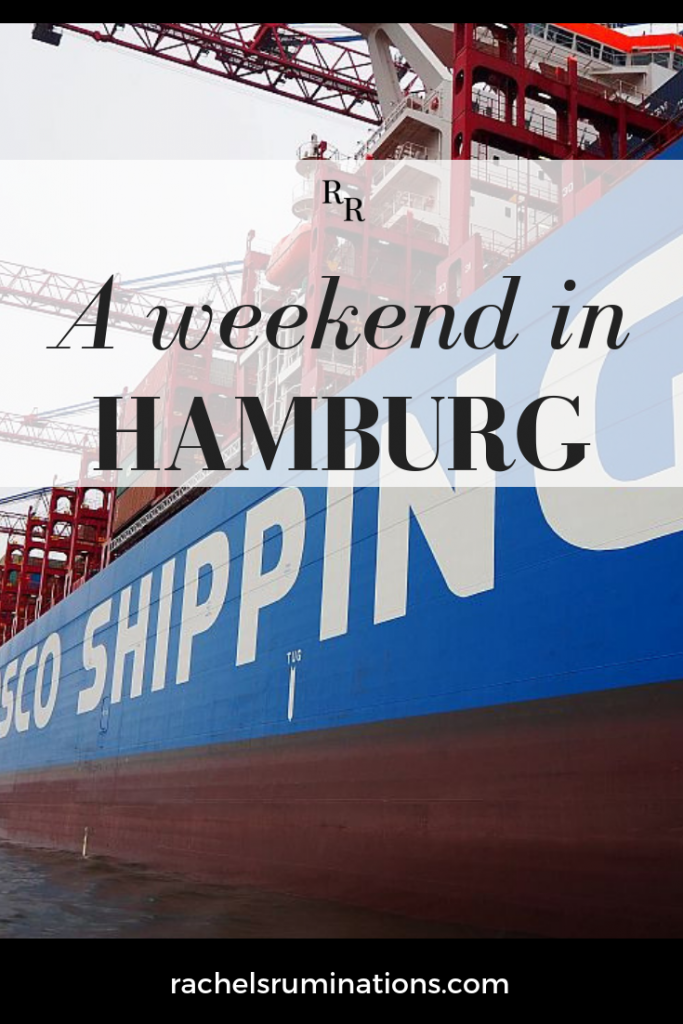
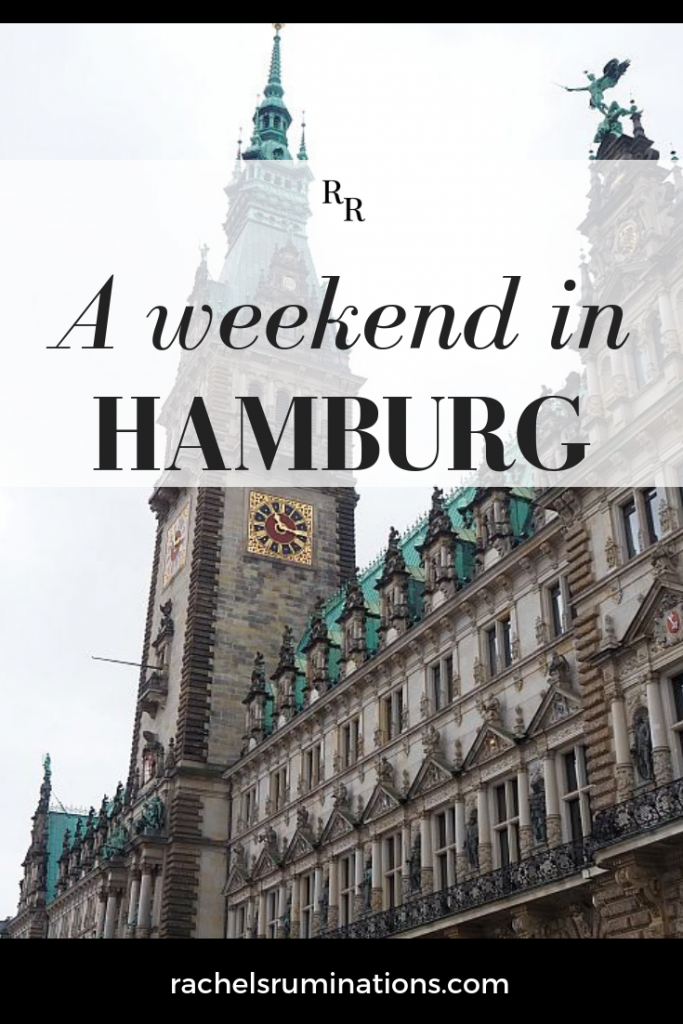
My travel recommendations
Planning travel
- Skyscanner is where I always start my flight searches.
- Booking.com is the company I use most for finding accommodations. If you prefer, Expedia offers more or less the same.
- Discover Cars offers an easy way to compare prices from all of the major car-rental companies in one place.
- Use Viator or GetYourGuide to find walking tours, day tours, airport pickups, city cards, tickets and whatever else you need at your destination.
- Bookmundi is great when you’re looking for a longer tour of a few days to a few weeks, private or with a group, pretty much anywhere in the world. Lots of different tour companies list their tours here, so you can comparison shop.
- GetTransfer is the place to book your airport-to-hotel transfers (and vice-versa). It’s so reassuring to have this all set up and paid for ahead of time, rather than having to make decisions after a long, tiring flight!
- Buy a GoCity Pass when you’re planning to do a lot of sightseeing on a city trip. It can save you a lot on admissions to museums and other attractions in big cities like New York and Amsterdam.
- Ferryhopper is a convenient way to book ferries ahead of time. They cover ferry bookings in 33 different countries at last count.
Other travel-related items
- It’s really awkward to have to rely on WIFI when you travel overseas. I’ve tried several e-sim cards, and GigSky’s e-sim was the one that was easiest to activate and use. You buy it through their app and activate it when you need it. Use the code RACHEL10 to get a 10% discount!
- Another option I just recently tried for the first time is a portable wifi modem by WifiCandy. It supports up to 8 devices and you just carry it along in your pocket or bag! If you’re traveling with a family or group, it might end up cheaper to use than an e-sim. Use the code RACHELSRUMINATIONS for a 10% discount.
- I’m a fan of SCOTTeVEST’s jackets and vests because when I wear one, I don’t have to carry a handbag. I feel like all my stuff is safer when I travel because it’s in inside pockets close to my body.
- I use ExpressVPN on my phone and laptop when I travel. It keeps me safe from hackers when I use public or hotel wifi.


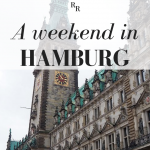

I was host family to a German college student years ago who was from Hamburg so this was interesting to read. It doesn’t seem like a typical “tourist city” but the maritime history would be something I’d enjoy exploring as you did…and my husband would definitely want to do the Chocoversum tour since he is a chocoholic!
Who knew? Found your article really intriguing. Not just the boat tour along the warehouses or the walking tour, but that there’s the Chocoversum. It’s like a pilgrimage.
Yep, there’s not much I wouldn’t do for anything to do with chocolate!
Thx for this fab post, Rachel. I’ve not previously read much about Hamburg. I had no idea it was the 2nd largest cocoa port in Europe! And I’d not previously heard of the Chocoversum. I can’t wait to read your post about it.
I think the Chocoversum is the very beginner’s level introduction to chocolate production. It would be much too basic for you!
I had no idea that Hamburg offered such a rich maritime history. Sure sounds like you made the best of your visit in spite of the weather. What a great itinerary for a first-time visitor!
I had no idea that Hamburg offered such a rich maritime history. Sure sounds like you made the best of your visit in spite of the weather. What a great itinerary for a first-time visitor!